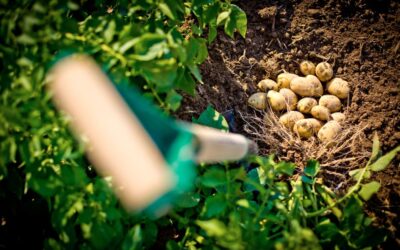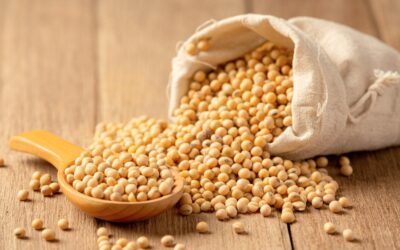Fertilization Techniques for Tea Plants
1) Types of Fertilizers Used:
There are two types:
(i) Organic mineral fertilizer SH01
(ii) Organic microbial fertilizer VN3
Table 1. Composition, content of registered substances

2) Instructions for using fertilizers from Suoi Hai Manufacturing and Trading Company
2.1) Base fertilization for newly planted tea bushes
Organic microbial fertilizer plays a crucial role in soil improvement and acidity regulation in tea cultivation. It provides a balanced source of nutrients and enhances soil porosity and structure. For young tea plants, rapid development of roots, stems, branches, and leaves is essential. Early root development helps penetrate deeper soil layers for water absorption, aiding in drought resistance, while branch growth forms the framework for the canopy.
The organic microbial fertilizer VN3 from Suoi Hai Manufacturing and Trading Company, in addition to providing a wide range of nutrients, including macro, micro, and trace elements formed during the decomposition of animal manure such as pig and cow dung, also contains beneficial microorganisms that promote the growth and development of crops while inhibiting the proliferation of pathogenic microorganisms in the root zone of plants.
- Application rates:
- If planting density is less than 6,000 plants/ha: 0.5 kg of organic microbial fertilizer VN3 and 0.2 kg of SH01 per planting hole
- If planting density is between 6,000 and 8,000 plants/ha: 0.4 kg of organic microbial fertilizer VN3 and 0.2 kg of SH01 per planting hole
- If planting density is more than 8,000 plants/ha: 0.3 kg of organic microbial fertilizer VN3 and 0.2 kg of SH01 per planting hole
- Application time: Apply 7-10 days before planting, then cover the fertilizer.
- Prepare the planting hole by digging a trench and filling it with soil to a depth of about 20 cm. Carefully place the tea seedling in the hole, ensuring not to damage the root system. Remove the seedling from its bag, position it in the hole with the roots oriented downward, and fill the hole with soil, compacting it gently around the seedling.
- Ensure that the soil is level with the top of the planting hole, leaving a gap of 2.5 cm – 3.5 cm (for clustered tea planting) or 4-5 cm (for scattered tea planting).
- After planting, mulch with a layer of 8-10 cm of debris or use plastic mulch to retain moisture.
2.2) Top-Dressing Fertilization for Tea During the Basic Development and Commercial Phases
a) Principles of Fertilization
- Fertilize according to the age and yield of the plant: young tea plants require less, while mature, high-yielding tea plants need more.
- Balance the NPK elements in the fertilizer.
- Apply fertilizer correctly and at the right time for each target, ensuring timely base and top-dressing applications.
- Adjust the amount and ratio of fertilizer elements according to weather and climate conditions.
b) Top-Dressing Fertilization for Tea During the Basic Development Phase
* Tea planted sparsely and at low density
- Tea aged 1-3 years
- Organic microbial fertilizer VN3: 1.0 – 1.5 tons/ha
- Organic mineral fertilizer SH01: 0.6 – 0.7 tons/ha
Organic mineral fertilizer SH01 and organic microbial fertilizer VN3 of Suoi Hai Production and Trading Joint Stock Company
Apply fertilizer twice a year: in March and July. Apply around the canopy, 20 cm away from the base, in a furrow 6 – 8 cm deep when the moisture level is about 70-80%. Place the fertilizer and cover with soil.
*Note:* Do not apply fertilizer during prolonged hot weather. Apply fertilizer when the soil is sufficiently moist, and avoid fertilizing during periods of heavy or concentrated rainfall.
* Concentrated tea planting on an industrial scale

Note: Organic microbial fertilizer VN3 is applied twice: March: 40%, July: 60%
c) Fertilizing for commercial tea
- Tea planting with dispersed spacing and sparse density
- Apply 2.0 – 2.5 tons of organic microbial fertilizer VN3 /ha
- Apply 0.7 – 1.0 tons of organic mineral fertilizer SH01 /ha
Fertilize twice a year: in March and July. Spread around the canopy, dig a trench 10-15 cm deep, apply fertilizer, and cover with soil.
- Tea planting on an industrial scale
- Apply 3.0 tons of organic microbial fertilizer VN3 /ha
- Apply 1.0 tons of organic mineral fertilizer SH01 /ha
Fertilize twice a year: in March and July. Spread around the canopy, dig a trench 10-15 cm deep, when the moisture level is about 70-80%, apply fertilizer, and cover with soil. - Apply 0.5 tons of organic mineral fertilizer SH01 /ha, divided into 7-8 times a year after each tea picking session from May to April of the following year. Spread around the canopy, dig a trench 10-15 cm deep, when the moisture level is about 70-80%, apply fertilizer, and cover with soil.
3) Pest and Weed Control
Effective pest and weed control directly impacts the productivity of tea cultivation and the quality of tea buds. It’s crucial to prioritize integrated pest management (IPM) measures, regularly inspecting the fields and keeping weeds at bay. In high-altitude tea areas, special attention must be given to weed removal around the base of plants, using barriers to prevent damage from grazing cattle.
3.1) Pests
- For dispersed tea cultivation, chemical pesticides are not used to control pests, primarily focusing on weed management by keeping the area around the tea plant base clear at a distance of 30-40cm.
- For concentrated tea cultivation, pesticides are only used when pest levels exceed prescribed thresholds (according to established procedures), while weed management follows current protocols.
3.2) Pest and Disease
a) Identifying Types of Fungal Diseases on Tea Leaves (brown spot, tea blister…)
- Tea Blister Disease: Caused by fungus (Exobasidium vexans Mas.). The disease occurs on young leaves and shoots, with most lesions at the leaf margins. Initially, small yellowish droplet-shaped spots appear on the leaves, then the lesions gradually enlarge and become paler. The undersides of the affected areas (lower leaf surface) swell, while the upper surfaces become concave, with distinct white powdery spores contrasting with the healthy leaf tissue. Infected branches will eventually die. Under conditions of high humidity and low temperature, the disease proliferates. The disease is most prevalent from March to May and September to October. The optimum temperature is 15 – 20°C. At temperatures of 11 – 12°C, the disease does not thrive, and above 26°C, it ceases to develop.
- Brown Spot Disease: Caused by fungus (Colletotrichum camelliaeMarasmius equinis Muler Derk.). Small black-colored spore masses of the fungus are found on the infected areas. The disease primarily affects mature leaves, branches, and fruits. On leaves, the disease typically begins at the leaf margins, with brown lesions that lack a specific shape or resemble a crescent. Circular concentric rings are visible on the lesions, which gradually extend to form wave-like, wheel-shaped patterns. Symptoms on branches are similar, with affected areas possibly tearing (rupturing) apart. The disease favors hot and humid conditions, usually occurring in July and August. After continuous rain for 10-15 days, the disease proliferates vigorously. The most intense outbreaks happen at temperatures of 27-29°C.
b) Pest and Disease Control Measures:
Clearing away diseased plant residues helps reduce the source of disease for the following year. Adequate fertilization, weed removal, and effective drought prevention promote healthy plant growth. When pruning tea, burying (covering) the leaves (green debris) helps eliminate disease sources. During periods of blister disease outbreak, which harm tea plantation workers, it’s essential to increase monitoring of tea plantations, follow weather forecasts, and if the disease is found to have spread significantly and weather conditions remain favorable for disease development, attention should be given to harvesting all affected buds and leaves. After harvesting, apply antagonistic microbial agents by spraying twice, with a 7-10 day interval.
Utilize antagonistic microbial agents for spraying tea leaves to prevent diseases:
- Utilize antagonistic microbial agents for spraying tea leaves to prevent diseases
- Dosage: 50 liters/ha.
- Spray twice a year in April and August, one week before tea harvesting.
Utilize antagonistic microbial agents for spraying tea leaves to treat diseases:
- Use antagonistic microbial agents to spray on the affected area, dosage: 70 liters/ha, with each spraying spaced 7-10 days apart.
Note: Spray the antagonistic microbial agents in the form of mist, spraying evenly once, avoid multiple rounds of spraying. Do not spray when it’s sunny. The suitable time for spraying is before 8 AM and after 4 PM. If it rains, additional spraying is necessary. For plants affected by diseases, use specific medications for treatment. After recovery from the disease, wait for 3 – 5 days before using antagonistic microbial agents.



